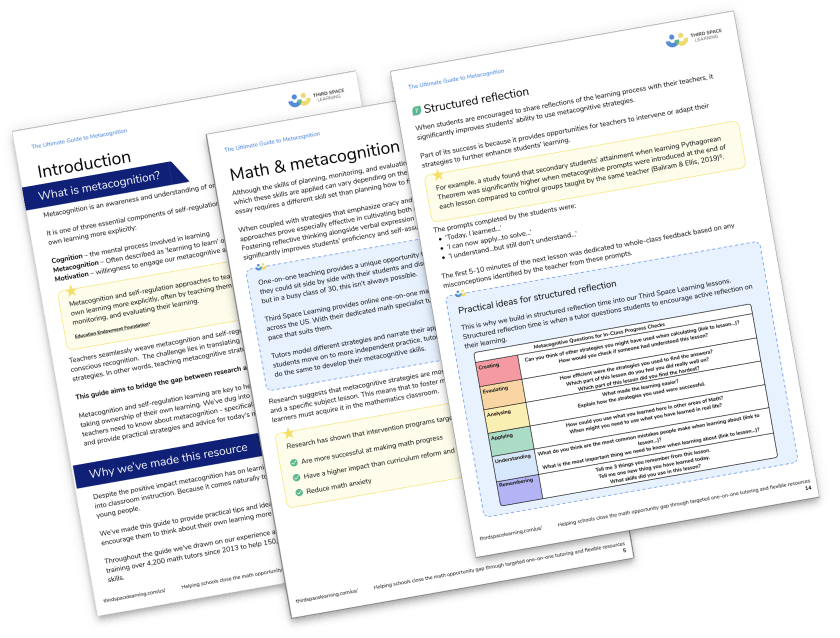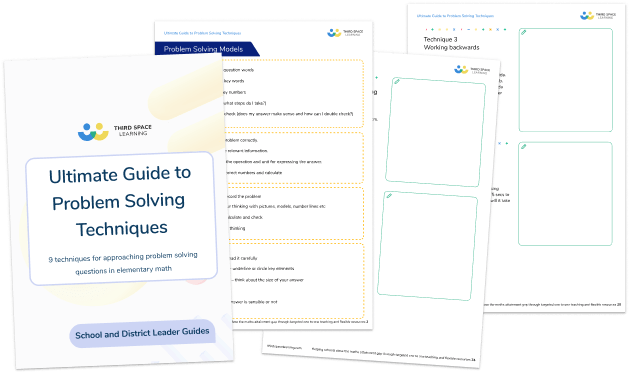Differentiation Strategies In The Classroom: 8 Methods For Every Teacher
While many schools adaopt a master approach to math, differentiation in the classroom and differentiated instruction strategies play a vital role in math. Here Neil Almond explains 8 differentiatied instruction strategies for educators and how to make sure they’re used effectively in schools.
When there are so many bad differentiated instruction strategies. It’s easy to fall into the trap of differentiating the wrong way when you differentiate instruction in the classroom. If we are not careful, this can widen the math achievement gap we’ve been trying to close.
With many other teaching strategies providing similar benefits at much lower risk, some teachers may feel that differentiation ‘isn’t worth it.’
But, using a mastery-based approach, it is possible, and ultimately essential, to develop a differentiated classroom that accommodates the individual needs of all students to create a learning experience that works for all.
Many of the ideas in this post are borrowed from Mark McCourt’s ‘Teaching For Mastery’
READ MORE:
First, we need to be clear on the vocabulary used among educators as the meaning can vary between them. Below, I outline what I mean by some of these words in the context of providing differentiated instruction in the classroom.
The Ultimate Guide to Problem Solving Techniques
Download this free worksheet to strengthen students' problem solving skills
Download Free Now!What is differentiation and what are differentiation strategies?
What is differentiation?
Differentiation, or differentiated learning, is often defined as tailoring instruction to meet the needs of individual students. However, this is too simplistic a definition in my view; we need to look at both what students’ needs might be through different prisms and how we can adjust our teaching and classroom management according to the ways they may present at different levels.
Differentiation in fluency
When they first learn new mathematical concepts, students use much of their working memory to think about what they are being taught.
We know from decades of cognitive science that our working memory – what we can think about in the moment and give attention to – is limited, some say between 4-7 pieces of information.
That is why when we want to remember a telephone number we have to keep on repeating it so that it is not lost from our working memory and forgotten.
Learning, as defined by Kirschner, Sweller and Clark, is a ‘change in long-term memory.’
Learners take what they hold in their working-memory and encode it into their long-term memory – a far more complicated process than I have made it sound here.
From our long-term memory, we can call upon this information as needed with very little effort – multiplication facts are a good example – and transfer them to our working memory to solve problems.
Fluency, is the process of retrieving information from our long-term memory with no effort from our working memory, freeing up valuable space in our working memory to give attention to other things.
READ MORE:
Differentiation of ability
When talking about ability, I am referring to an individual student’s capability to grasp new ideas and concepts.
An ‘ability gap’ within a class will still be present whether that class is streamed or not. This is far from fixed, and changes in our pedagogy can result in students grasping new ideas more quickly and working at a higher level than they may have done previously. With the right learning opportunities and differentiating instruction, more students are able to become high achievers.

Meet Skye, the voice-based AI tutor making math success possible for every student.
Built by teachers and math experts, Skye uses the same pedagogy, curriculum and lesson structure as our traditional tutoring.
But, with more flexibility and a low cost, schools can scale online math tutoring to support every student who needs it.
Find out moreDifferentiation of achievement
When talking about achievement, I am referring to the differences between what students in the class know.
When we talk about ‘streaming’ classes – this is really what we mean. By setting students (or putting them into ability groups within classes), we are trying to limit the range of the achievement gap – the difference between the most that one student knows and the least another student knows – within classes.
This then gives teachers and support staff a narrower range to focus on while giving high-quality instruction.
In Mark’s ‘Teaching for Mastery’ book, he recognizes that there is no high-quality research into whether classes should be in mixed ability or set.
Differentiated instruction in the classroom as part of your teaching
With those important definitions established, this list of strategies to differentiate instruction in the classroom is a good starting point for you to continue your professional development and develop your whole class teaching in a mastery-aligned way.
For the mastery model to work, groups need to be as highly homogenized as possible, meaning the achievement gap in a class needs to be as narrow as possible with the understanding that there would be great fluidity between groups.
Generally, this is out of the control of the teacher and is a strategic choice made by leaders. However, this does not mean a teacher cannot explore flexible grouping within their classroom environment.
Below are eight ways teachers can change their practice to ensure that, through their differentiated instruction, everyone is brought up to a good standard.
In essence, these are the differentiated instruction strategies to aim for rather than different colored worksheets, different lesson plans, or different learning objectives.
As a math teacher or math lead following a math mastery focused approach, many of the examples in this post will be math-based and focus on the elementary classroom.
However, the differentiation strategies highlighted can be used for any subject and any year group.
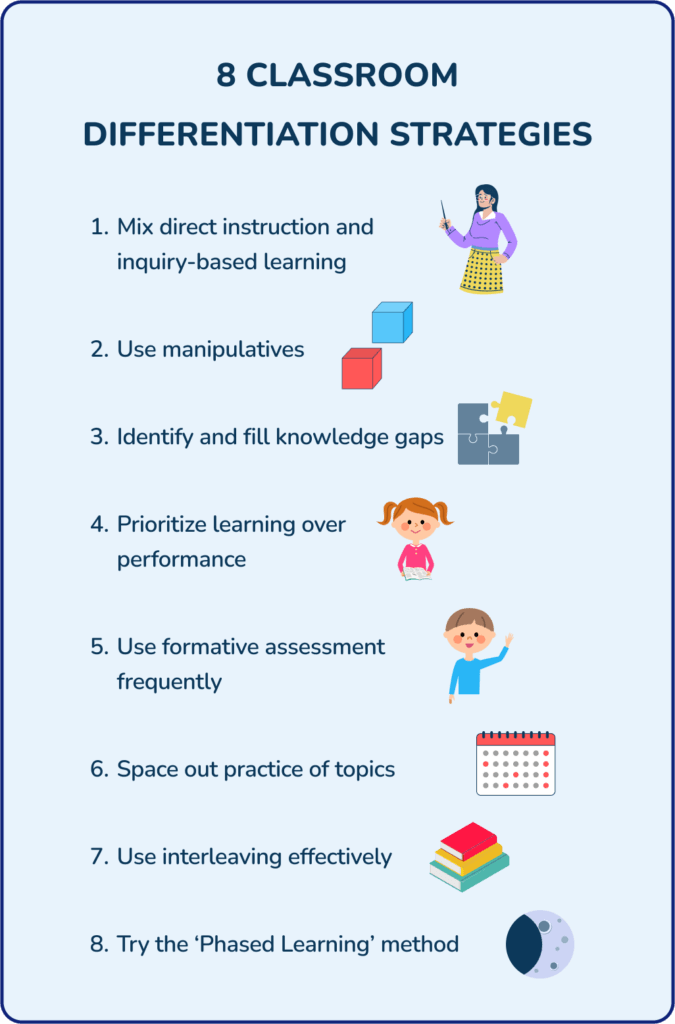
1. Mix direct instruction and inquiry-based learning
To give students the best chance to succeed (and bring all learners up together as one), the majority of our teaching should involve teacher-directed methods.
The table below looks at how differentiated instruction impacted PISA scores.
While every teacher-directed method produced increases overall, inquiry-based methods had a negative impact when used with ‘none to few’ teacher-directed lessons.
Most importantly, it is only when we use a mixture of teacher-directed methods and student centered learning inquiry-based learning that we optimize the benefits both methods can offer.
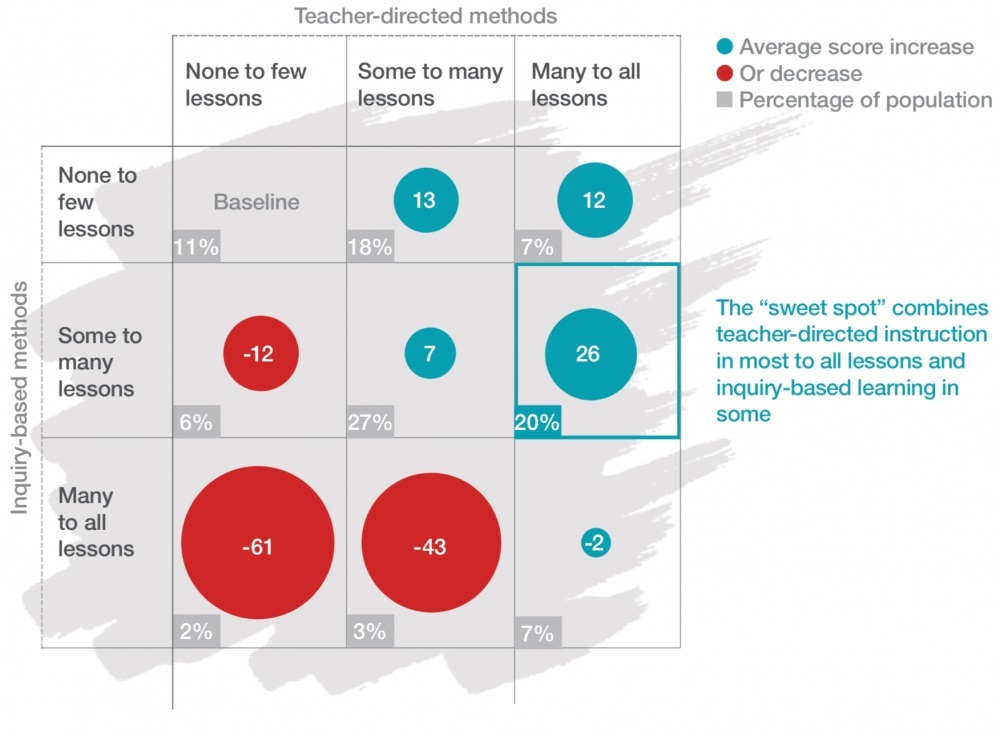
Source: OECD PISA 2015, McKinsey analysis
To ensure that the whole class is ‘brought up’ to the same level, we must look at the pedagogical choices we make while teaching and decide whether they’re the most efficient choices to bring out the best in our students.
One of the biggest variables in teaching for mastery is time; we need to use it wisely.
When we can start with direct instruction about a topic, as opposed to having students discover it for themselves, we should.
2. Include manipulatives for kinesthetic learners
Manipulatives are physical objects used to help teach a math concept; they can range from fruits to blocks. They are commonly used as part of the Concrete Representational Abstract approach, which is particularly beneficial for kinesthetic learners.
This is not to be confused with the idea of kinesthetic learning. The idea of ‘learning styles’ has been disproven. However, math manipulatives allow students who are learning new ideas to create mental representations of the subject being taught.
Learning strategies such as mental representations help students embed conceptual understanding, increasing their chances of applying these key concepts to other contexts.
Interestingly, a study by Panasuk and Beyranevand (which McCourt cites in his book) claims students who have deep conceptual understanding perform well on standardized tests, yet the opposite does not hold true. There is limited evidence to suggest that high achievement is a good indicator of deep conceptual understanding.
Manipulation of manipulatives, as well as articulating thoughts and ideas, can help to solidify ideas, concepts or facts and allow teachers to transfer this knowledge to new contexts.
In his book ‘Teaching for Mastery,’ Mark takes what he calls a ‘mathematical diversion’ and illustrates a range of ways in which he uses Cuisenaire rods to demonstrate a variety of mathematical ideas – including arithmetic with fractions and using negative numbers.
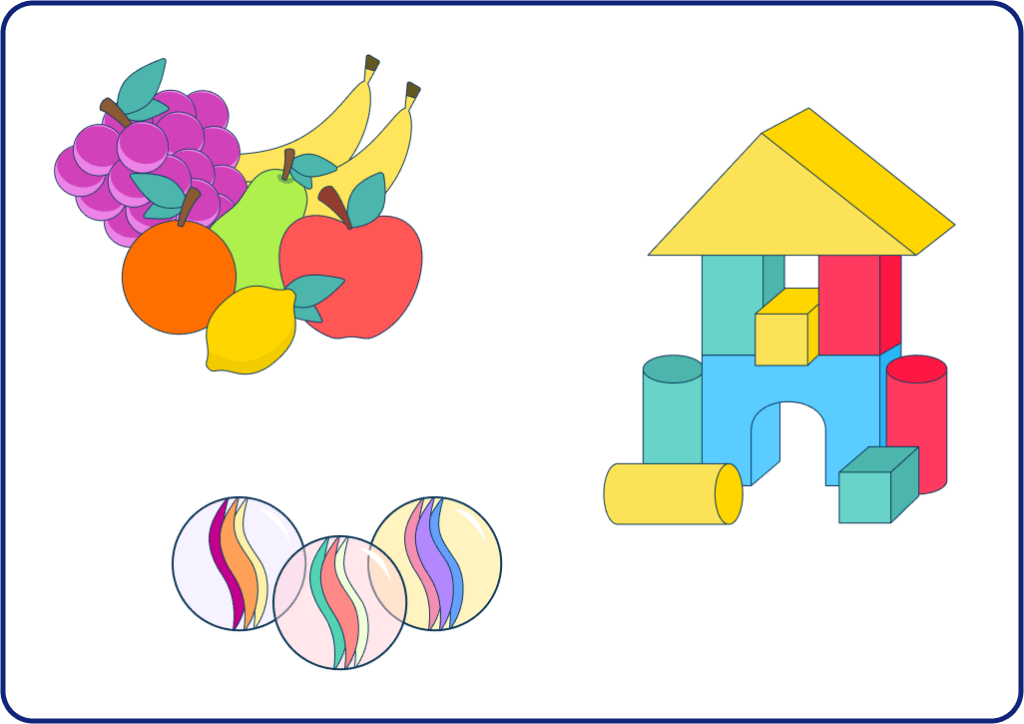
All of these are examples of potential manipulatives.
3. Find learning gaps and fill them
The core purpose of mastery-based teaching is to ensure that no child is left behind.
In an ideal world, the route to mastery would begin in kindergarten so the class group would be as homogenized as possible.
Obviously, this is not the case for those looking to begin to implement mastery principles in their current class.
Where there is a large range of different abilities in a class, it is very unlikely that providing challenging and demanding work to the more able students at the top of the range and easier, less demanding work to those at the bottom of the range will close the achievement gap.
When differentiation is planned by giving students different tasks based on prior achievement, teachers are, in fact, increasing that gap.
In-class differentiation, through providing differentiated teaching, activities and resources, has generally not been shown to have much impact on students’ attainment.
Education Inspection Framework
To close the gap, elementary teachers should look to the first element of the mastery cycle and establish their students’ prior knowledge: what key ideas are missing from a child’s knowledge of a subject? Fill those gaps.
This is when you should create or use diagnostic questions specifically designed on a range of mathematical content to identify a child’s misconceptions. Craig Barton’s Eedi website is built around these.
Why knowledge gaps appear, and how to close them
As mentioned, fluency is crucial for effective differentiation. For example, when students can remember their number facts and are fluent in number bonds to and within 10, the concept of place value, and multiplication facts, they can use a greater portion of their working memory to learn new math content.
Students who are still reliant on using valuable working memory space to add numbers, perhaps with fingers, are likely to encounter cognitive overload when coupled with new instruction.
This cognitive overload prevents the encoding of new information into the student’s long-term memory, meaning they are unlikely to reach their learning goals.
Students who are confident in their number facts can recall this from their long-term memory, effectively bypassing the limits of working memory, and using their working memory to focus on the new content.
Changing the displays in your classroom topic-by-topic is a great way to passively fill gaps and enrich students’ learning environment.
Ensure that there are plenty of opportunities for fluency and gap-filling. Have students quiz each other in pairs or small groups, chant times tables or mnemonics as a whole class – the greater the variety of classroom practices you can differentiate, the better!
4. Prioritize learning over performance
Over the last 50 years, cognitive psychology found a distinction between performing well on a task and learning from that task.
This finding has made the most profound change in my practice since I began my teaching career and how I teach students.
Before, I would take students performing well on a task to be a good indication of students learning what I was teaching. It was always a massive frustration when in the next lesson (or in several lessons), I wanted the students to use that skill again and many were unable to recall it despite doing well in the original lesson.
This is down to a simple concept that was lost to me during teacher training and the first four and a half years of my career – performing well and learning are two totally different things.
We’re always measuring how well students are performing; performance is the interactions they have with them ‘in the moment,’ or how many questions they got right on that worksheet.
Yet performing well is a poor proxy for learning. It is easy to fall into the trap of ‘oh, the students have got this, let’s move on,’ because students are performing well.
So when teachers move onto a topic too quickly based on performance, it is no wonder that the achievement gap increases. We’re essentially skipping part of the learning process, based on incomplete evidence.
To move everyone forward at the same pace, we need to ensure that concepts, facts and truths are learned, not performed.
READ MORE: Metacognition In The Classroom
5. Formative assessment to guarantee understanding
Formative assessment helps bring everyone up to the same standard. Especially in a class with diverse learning needs, awareness of the breadth of understanding between students is key to helping them improve.
Formative assessment crops up three times during the mastery cycle – at the beginning, element three, and element five.
Diagnostic pre-assessment with pre-teaching
High-quality, group-based initial instruction
Progress monitoring through regular formative assessment
High-quality corrective instruction
Second, parallel formative assessment
Enrichment or extension activities
But what is formative assessment?
The purpose of formative assessment is to ascertain if students learn something and if they understand what is taught.
As educational psychologist David Ausubel put it in 1968, ‘The most important single factor influencing learning is what the learner already knows. Ascertain this and teach them accordingly.’
In Dylan Wiliam’s latest book, Creating the Schools our Children Need, he outlines five main features of short-cycle formative assessment and what teachers can do, minute-by-minute or day-by-day, to ensure high-quality formative assessment takes place.
Ensuring students know what they are meant to be learning
Finding out what the students have learned
Providing feedback that improves the students’ learning
Having students help each other learn (group work, peer marking, etc.)
Developing students’ ability to monitor and assess their own learning.
The impact of formative assessment
Recent research has found that formative assessment has a positive effect on learning outcomes. The National Council of Teachers of Mathematics found that formative assessment produces greater increases in achievement and is more cost-effective than other efforts to boost achievement such as reduced class sizes.
They also found that students in the lower third for achievement showed greater progress than those in the highest third.
Assessment for learning can ensure everyone is brought up to a high standard by establishing what a student knows:
Before teaching them something new;
After they learn a new topic;
After we change our practice as a result of the first wave of formative assessment.
For practical ideas on carrying out the short-term formative assessment cycle, see Dylan Wiliam’s book, ‘Embedding Formative Assessment’ and Shirley Clarke’s ‘Outstanding Formative Assessment – Culture and Practice.’
6. Create lessons with spaced practice
Spaced Practice refers to a specific practice concerned with timing ‘when’ it’s best to learn.
Is it better to spend seven hours on a Sunday practicing a skill before a test or to space those seven hours out into one-hour sessions across seven days?
Many studies found it’s better to practice seven one-hour sessions than to practice for seven hours the night before.
Mark McCourt draws on the research of Rohrer and Taylor to illustrate this point. To summarize, three groups were asked to participate in a test and prepare for the test in the following ways:
| Week 1 | Week 2 | Week 3 | |
| Spacers | Two problems | Two problems | Test |
| Massers | Four problems | Test | Filler Task |
| Light Massers | Two problems | Test | Filler Task |
The gap between practicing and taking the test was the same – one week. The final outcome was that those who used the spacing method performed better than the massed practice categories.
To help students benefit from spaced practice, dedicate time in every lesson to review previously learned material. Since January 2019, I have begun all my math lessons the following way:

The last week, last month and last quarter structure proved useful to space practice of core ideas across the school year that the students had already been taught.
Students had to retrieve this information from their long-term memory; if they failed, it was clear that students had forgotten the idea. Then, I could quickly adapt my lesson content to review content again.
I would also consider whether the homework I set should be based on recent content or revisit previously taught content.
7. Interleave effectively
If spacing is the ‘when’ of practice, interleaving is the ‘what’ to practice.
In an hour-long session, would it be better to spend the whole session practicing long division, or would it be better to practice fifteen minutes of long division and fifteen minutes of long multiplication twice over?

Cognitive science is confident that the latter provides more benefits to long-term learning.
Note that this should only be used once students can successfully complete a math skill. It would make very little sense to teach a day of fractions and a day of numbers and assume students can automatically work on them interchangeably.
But once students are familiar with concepts, then practice and review of those concepts can be interleaved.
The benefits of interleaving are well documented, and Rohrer and Taylor again have produced math specific evidence of the benefits of interleaved practice.
They found that those who interleaved their practice two weeks before a test did not perform as well in their practice sessions as those who blocked work into one sitting. But, they did score significantly higher than the blockers in test performance. Blockers achieved 20% accuracy and the interleavers scored 63%.
Interleaving is particularly useful in teaching the formal long division and long multiplication methods.
What does effective interleaving look like?
To help bring all students up to the same level, we should look to interleave new content with previously learnt material once we are sure it has been fully taught and understood.
For example, once you have covered fractions, they can be interleaved into perimeter questions.
Another way to interleave would be to include several questions from a previously taught and unrelated topic in the current work.
If nothing else, this ensures that children read questions carefully and avoid going into auto-pilot when the same types of questions are repeated.
8. Phased learning in the classroom
This is Mark McCourt’s proposed structure of a learning episode from Teaching For Mastery.
In phased learning, there are 4 parts:
Teach;
Do;
Practice;
Behave.
Phase 1: Teach
During the Teach phase, ideas are novel to the learner and the teacher passes on key knowledge and facts through worked examples, modeling and metaphor. This helps students make new connections in their schema.
Crucially, no new learning takes place for the student.
Phase 2: Do
The Do phase checks if students have understood all the interactions and modeling from the Teach phase.
Look for replication of what has gone on previously. If not, the teacher can change their models and use high-quality corrective instruction personalized to individual learners to ensure that the students can grasp the idea.
The Do phase should also build up a student’s confidence in a topic so that they know they can learn the material at hand. Eagle-eyed readers will already be picking up on the crossover potential this has with the growth mindset.
Again no learning has happened by the end of this phase, just replication.
Phase 3: Practice
The practice phase seeks to move students beyond mere performance and provide the conditions for far transfer – using concepts across different contexts.
This can only happen when fluency is achieved and the students can use some of the space in their working memory to attend to the deeper structures of the idea.
Phase 4: Behave
The final and most important phase is the Behave phase. Learners have the opportunity to demonstrate a deep understanding of the concept.
The content we should expect the students to ‘Behave’ should not be the same content covered in the previous phases, but rather content already familiar to the students.
As Mark McCourt puts it, ‘many teachers find it an uncomfortable – perhaps even illogical – process to plan the ‘Behave’ phase as one that relates to much earlier learning rather than the new idea. However, it is crucial to do so for optimal gains in learning, understanding and long-term recall.’
Encouraging student participation and engagement
Encouraging student participation and engagement is a key component of differentiated instruction. When students actively engage in the learning process, they are more likely to be motivated, interested, and invested in their learning.
To encourage student participation and engagement, teachers can use a variety of strategies, such as:
Autonomy in learning activities: Allowing students to choose from a variety of learning activities can increase their sense of ownership and motivation. This could include selecting topics for projects, choosing how to demonstrate their understanding, or deciding on group roles.
Technology to enhance learning and engagement: Integrating technology, such as interactive apps, online quizzes, and virtual simulations, can make learning more dynamic and engaging. Technology can also provide personalized learning experiences that cater to individual student needs.
Hands-on activities: Using games and simulations can make learning fun and interactive, while hands-on activities can help students understand abstract concepts through practical application.
Encouraging discussions: Promoting discussions and collaborative learning activities can help students learn from each other and develop critical thinking skills. Group work, peer teaching, and class debates foster communication and engagement.
Creating a supportive learning environment for long-term results
If we want all students to reach the same level, we need to put learning for the long-term ahead of short-term performances. Look at your teaching and redesign it around the ideas and benefits of math mastery discussed here.
It takes time to recognize the full impact of differentiation in the classroom. There may be some short-term improvements for different groups of students but the real strength of mastery-based differentiation and other quality first teaching strategies is in the impact they can have across a child’s education.
In diverse US classrooms with 20+ students, it’s hard to close the achievement gap. Math interventions or working in small groups or one-on-one can positively impact this.
For over a decade, Third Space Learning has provided one-on-one math tutoring to the students who need it most. Our personalized tutoring is now delivered by Skye, the AI math tutor.

Do you have students who need extra support in math?
Skye—our AI math tutor built by experienced teachers—provides students with personalized one-on-one, spoken instruction that helps them master concepts, close skill gaps, and gain confidence.
Since 2013, we’ve delivered over 2 million hours of math lessons to more than 170,000 students, guiding them toward higher math achievement.
Discover how our AI math tutoring can boost student success, or see how our math programs can support your school’s goals:
– 3rd grade tutoring
– 4th grade tutoring
– 5th grade tutoring
– 6th grade tutoring
– 7th grade tutoring
– 8th grade tutoring
